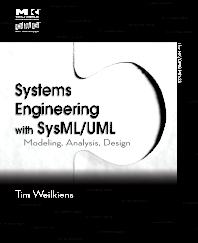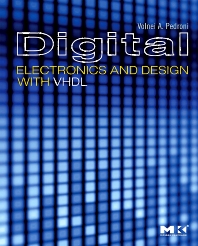Books in Computer science
Books in Computer science
The Computing collection presents a range of foundational and applied content across computer and data science, including fields such as Artificial Intelligence; Computational Modelling; Computer Networks, Computer Organization & Architecture, Computer Vision & Pattern Recognition, Data Management; Embedded Systems & Computer Engineering; HCI/User Interface Design; Information Security; Machine Learning; Network Security; Software Engineering.
- 1st Edition
- February 12, 2008
- Tim Weilkiens
- English
- Paperback9 7 8 0 1 2 3 7 4 2 7 4 2
- eBook9 7 8 0 0 8 0 5 5 8 3 1 8

Systems Engineering with SysML/UML
- 2nd Edition
- February 8, 2008
- Kenneth L. Calvert + 1 more
- English
- Paperback9 7 8 0 1 2 3 7 4 2 5 5 1
- eBook9 7 8 0 0 8 0 5 6 8 7 8 2

TCP/IP Sockets in Java
- 1st Edition
- January 31, 2008
- Lee Hilyer
- English
- Hardback9 7 8 1 8 4 3 3 4 3 0 4 2
- Paperback9 7 8 1 8 4 3 3 4 3 0 3 5
- eBook9 7 8 1 7 8 0 6 3 1 2 2 6

Presentations for Librarians
- 1st Edition
- January 31, 2008
- Tara Brabazon
- English
- Hardback9 7 8 1 8 4 3 3 4 4 6 0 5
- Paperback9 7 8 1 8 4 3 3 4 4 5 9 9
- eBook9 7 8 1 7 8 0 6 3 1 6 9 1

The Revolution Will Not Be Downloaded
- 1st Edition
- January 31, 2008
- Rachel Bridgewater + 1 more
- English
- Paperback9 7 8 1 8 4 3 3 4 3 5 7 8
- Hardback9 7 8 1 8 4 3 3 4 3 5 8 5
- eBook9 7 8 1 7 8 0 6 3 1 2 3 3

Instant Messaging Reference
- 1st Edition
- January 29, 2008
- Anthony Piltzecker
- English
- Paperback9 7 8 1 5 9 7 4 9 2 1 2 6
- eBook9 7 8 0 0 8 0 5 5 8 6 3 9

How to Cheat at Administering Office Communications Server 2007
- 1st Edition
- January 25, 2008
- Volnei A. Pedroni
- English
- Hardback9 7 8 0 1 2 3 7 4 2 7 0 4
- eBook9 7 8 0 0 8 0 5 5 7 5 5 7

Digital Electronics and Design with VHDL
- 1st Edition
- January 22, 2008
- Joe Celko
- English
- Paperback9 7 8 0 1 2 3 7 4 1 3 7 0
- eBook9 7 8 0 0 8 0 5 5 7 5 2 6

Joe Celko's Thinking in Sets: Auxiliary, Temporal, and Virtual Tables in SQL
- 1st Edition
- January 16, 2008
- Rogelio Martinez Perea
- English
- Hardback9 7 8 0 1 2 3 7 4 3 0 0 8
- Paperback9 7 8 0 3 2 3 2 8 1 1 7 1
- eBook9 7 8 0 0 8 0 5 5 7 3 7 3

Internet Multimedia Communications Using SIP
- 1st Edition
- Volume 1
- December 18, 2007
- Frank van Harmelen + 2 more
- English
- Hardback9 7 8 0 4 4 4 5 2 2 1 1 5
- eBook9 7 8 0 0 8 0 5 5 7 0 2 1

Handbook of Knowledge Representation